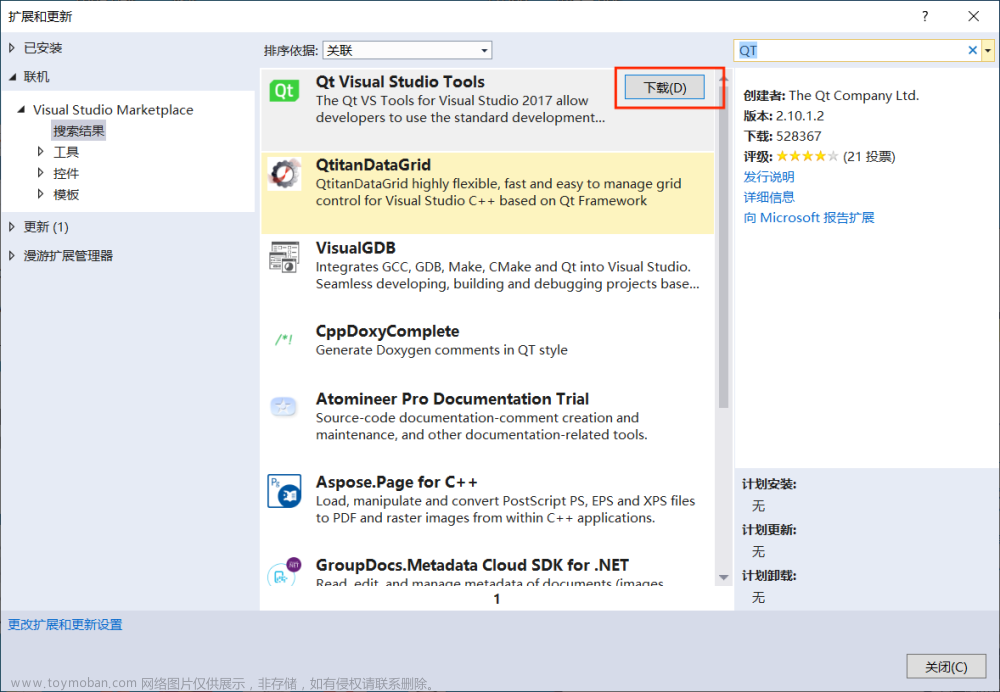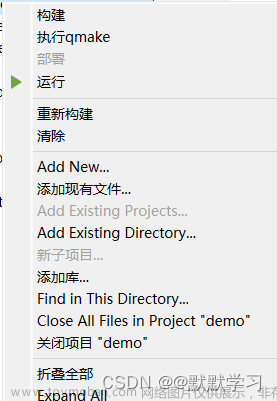小闹钟
功能
当按下启动按钮时,停止按钮可用,启动按钮不可用,闹钟无法设置,无法输入自定义内容
当按下停止按钮时,暂停播报,启动按钮可用,闹钟可以设置,可以输入自定义内容
 文章来源:https://www.toymoban.com/news/detail-696840.html
文章来源:https://www.toymoban.com/news/detail-696840.html
.pro文件
QT += core gui texttospeech
greaterThan(QT_MAJOR_VERSION, 4): QT += widgets
CONFIG += c++11
# The following define makes your compiler emit warnings if you use
# any Qt feature that has been marked deprecated (the exact warnings
# depend on your compiler). Please consult the documentation of the
# deprecated API in order to know how to port your code away from it.
DEFINES += QT_DEPRECATED_WARNINGS
# You can also make your code fail to compile if it uses deprecated APIs.
# In order to do so, uncomment the following line.
# You can also select to disable deprecated APIs only up to a certain version of Qt.
#DEFINES += QT_DISABLE_DEPRECATED_BEFORE=0x060000 # disables all the APIs deprecated before Qt 6.0.0
SOURCES += \
main.cpp \
widget.cpp
HEADERS += \
widget.h
FORMS += \
widget.ui
# Default rules for deployment.
qnx: target.path = /tmp/$${TARGET}/bin
else: unix:!android: target.path = /opt/$${TARGET}/bin
!isEmpty(target.path): INSTALLS += target
RESOURCES += \
Icon.qrc
widget.h文件
#ifndef WIDGET_H
#define WIDGET_H
#include <QWidget>
#include <QTimer> //定时器类
#include <QTime> //时间类
#include <QTimerEvent> //定时器事件类的头文件
#include <QDateTime> //日期时间类
#include <QDateTimeEdit>
#include <QDebug>
#include <QTextToSpeech> //朗读
#include <QTextEdit>
#include <QMetaObject>
QT_BEGIN_NAMESPACE
namespace Ui { class Widget; }
QT_END_NAMESPACE
class Widget : public QWidget
{
Q_OBJECT
public:
Widget(QWidget *parent = nullptr);
~Widget();
//重写定时器事件处理函数
void timerEvent(QTimerEvent *event)override;
signals:
void my_signal();
private slots:
void on_pushButton_clicked();
void on_pushButton_2_clicked();
private:
Ui::Widget *ui;
//定义一个定时器的id
int timer_id; //基于事件处理函数的定时器
int timer_id1;
QTextToSpeech *speech;
int i = 0;
int flag = 0;
QString text;
QDateTime sys_dt;
};
#endif // WIDGET_H
main.cpp文件
#include "widget.h"
#include <QApplication>
int main(int argc, char *argv[])
{
QApplication a(argc, argv);
Widget w;
w.show();
return a.exec();
}
widget.cpp文件
#include "widget.h"
#include "ui_widget.h"
Widget::Widget(QWidget *parent)
: QWidget(parent)
, ui(new Ui::Widget)
{
ui->setupUi(this);
this->setWindowTitle("小闹钟");
timer_id = this->startTimer(5);
ui->pushButton_2->setEnabled(false);
ui->textEdit->setPlaceholderText("请输入闹钟响时播报的内容");
this->setWindowIcon(QIcon(":/new/prefix1/666.png"));
}
Widget::~Widget()
{
delete ui;
}
void Widget::timerEvent(QTimerEvent *event)
{
if(event->timerId()) //== timer_id) //用来判断不同的定时器的id
{
//获取当前系统的日期时间
sys_dt = QDateTime::currentDateTime();
//展示时间到ui界面的lable2中
ui->label->setText(sys_dt.toString("yyyy-MM-dd hh:mm:ss"));
//居中显示 标签文本对齐方式
ui->label->setAlignment(Qt::AlignCenter);
ui->label->setFont(QFont("微软雅黑",20));
QString timeText = sys_dt.toString("yyyy-MM-dd hh:mm:ss");
QString timeText1 = ui->dateTimeEdit->text();
if(flag == 1)
{
if(timeText1 == timeText)
{
speech->say(text); // 朗读文本
}
}
}
}
void Widget::on_pushButton_clicked()
{
flag = 1;
speech = new QTextToSpeech;
text = ui->textEdit->toPlainText();
ui->pushButton_2->setEnabled(true);
ui->pushButton->setEnabled(false);
ui->textEdit->setEnabled(false);
ui->dateTimeEdit->setEnabled(false);
}
void Widget::on_pushButton_2_clicked()
{
flag = 0;
ui->pushButton->setEnabled(true);
ui->pushButton_2->setEnabled(false);
ui->textEdit->setEnabled(true);
ui->dateTimeEdit->setEnabled(true);
speech->stop();
}
widget.ui文件
 文章来源地址https://www.toymoban.com/news/detail-696840.html
文章来源地址https://www.toymoban.com/news/detail-696840.html
到了这里,关于用Qt自制一个小闹钟的文章就介绍完了。如果您还想了解更多内容,请在右上角搜索TOY模板网以前的文章或继续浏览下面的相关文章,希望大家以后多多支持TOY模板网!













